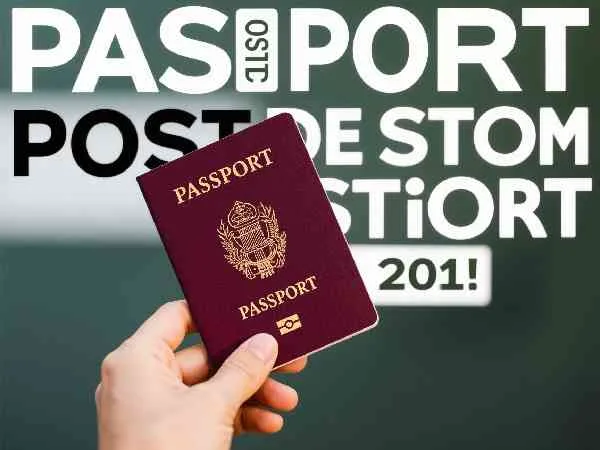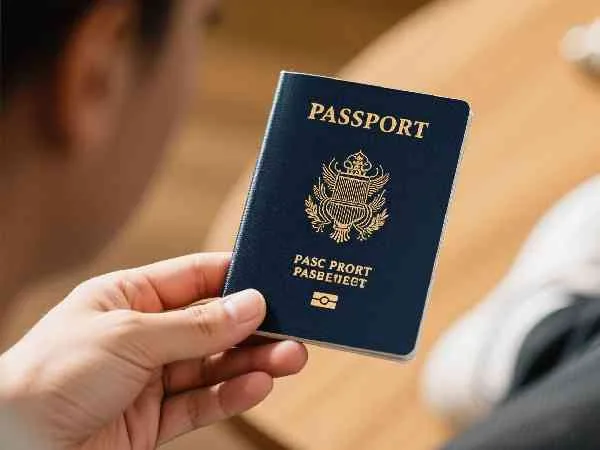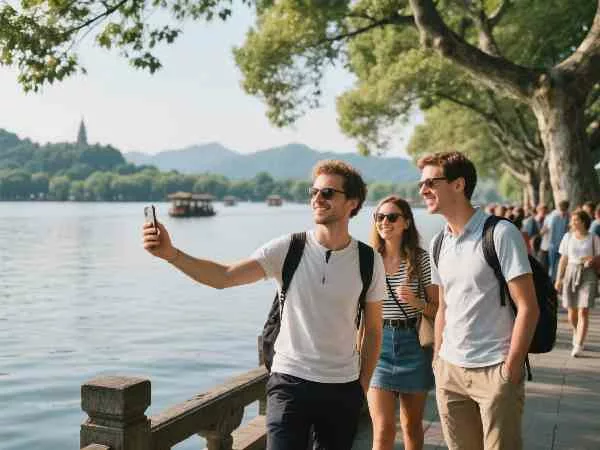Introduction: Simplifying Travel to China
China, a land brimming with ancient traditions, breathtaking landscapes, and a vibrant modern culture, has long been a dream destination for travelers worldwide. In 2025, the country has taken significant strides to make visiting even more accessible by expanding its visa – free policies. This is excellent news for Americans looking to explore the Great Wall, the Forbidden City, or the bustling streets of Shanghai without the hassle of a complex visa application process.
These new visa – free regulations are not only a boon for tourists but also for business travelers and those visiting family. Whether you’re planning a short – term business meeting in Beijing, a week – long vacation in the tropical paradise of Hainan, or a month – long cultural immersion in the historic city of Xi’an, understanding which visa – free options apply to you is crucial. This article will serve as your comprehensive guide, covering everything from which countries are eligible for visa – free entry, the different types of visa – free policies, and practical tips to ensure a smooth journey.
1. Long-Term Visa Exemption Policies
China offers visa-free entry to citizens of select countries for tourism, business, or transit purposes. These policies are either reciprocal (based on bilateral agreements) or unilateral.
1.1 Bilateral Agreements
Countries with mutual visa – exemption treaties include:
Thailand (60 days): Thai citizens can enjoy a 60 – day visa – free stay in China. This extended period allows them to not only visit popular tourist cities like Beijing and Shanghai but also explore some off – the – beaten – path destinations in Yunnan or Guizhou. For example, they can spend time in the ancient town of Lijiang, experiencing the unique Naxi culture.
Singapore (30 days): Singaporean travelers often take advantage of the 30 – day visa – free policy to engage in business activities in China’s economic hubs such as Shenzhen or to enjoy a short – term vacation in cities like Hangzhou, known for its beautiful West Lake.
Maldives (30 days): With its 30 – day visa – free entry, Maldivian tourists can explore China’s rich historical and cultural heritage. They might visit the Terracotta Army in Xi’an or take a stroll through the Forbidden City in Beijing.
Serbia (30 days): Serbian citizens can use their 30 – day visa – free stay to discover the charm of Chinese cities. They could explore the colonial – era architecture in Tianjin or participate in the vibrant nightlife in Chengdu.
UAE (30 days): UAE residents can come to China for business or tourism. In Shanghai, they can attend international trade fairs or shop in the bustling Nanjing Road area during their 30 – day visa – free period.
Qatar (30 days): Qataris can enjoy a 30 – day visa – free visit to China. They may be interested in exploring the cultural and religious sites in Tibet or experiencing the modernity of Guangzhou.
Mauritius (90 days): The 90 – day visa – free policy for Mauritian citizens enables them to have an in – depth exploration of China. They can embark on a long – distance trip along the Yangtze River, visiting cities like Wuhan and Chongqing.
Seychelles (30 days): A traveler from Seychelles can stay in China for up to 30 days without a visa, ideal for exploring cities like Shanghai or Xi’an. They can visit the Yu Garden in Shanghai, with its beautiful traditional Chinese architecture, or the ancient city walls of Xi’an.
1.2 Unilateral Exemptions
China also grants visa – free entry to citizens of countries like:
Albania (90 days): Albanian tourists have 90 days to explore China at their own pace. They could visit the Mogao Caves in Dunhuang, a world – renowned cultural heritage site, during this extended period.
Bahamas (90 days): Bahamas citizens can use their 90 – day visa – free stay to experience the diverse landscapes of China, from the snow – covered mountains in the northeast to the tropical beaches in Hainan.
Fiji (120 days): With a 120 – day visa – free period, Fijian travelers can have a truly immersive experience in China. They might take a slow – paced journey through the ancient water towns in Jiangnan, such as Zhouzhuang or Tongli.
Georgia (30 days): Georgian visitors can spend 30 days in China, perhaps sampling the local cuisine in different regions. They could try the spicy Sichuan cuisine in Chengdu or the delicate dim sum in Guangdong.
Ecuador (90 days): These policies are subject to change, so verify updates before departure. Ecuadorian tourists with a 90 – day visa – free entry can plan a comprehensive trip to China. They can visit the Great Wall at different sections, like Badaling or Simatai, to get different perspectives on this iconic structure.

2. Temporary Visa Exemptions (2024–2025)
To boost tourism and business exchanges, China has introduced temporary exemptions for specific countries until December 31, 2025.
2.1 Newly Added Countries
Countries enjoying temporary 15 – day visa – free entry include:
Australia
New Zealand
Poland
Slovakia
Norway
Finland
Denmark
Iceland
South Korea
Japan: Australians, for instance, can now visit Beijing or Hong Kong for short trips without pre – arranging a visa.
2.2 Extension of Stay for Some Countries
For countries like Australia, New Zealand, and Poland, the initial 15 – day visa – free period has been extended to 30 days as of November 30, 2024. This extended stay allows travelers from these countries to have a more in – depth exploration of China. For example, a New Zealander can now plan a more leisurely trip to explore multiple regions in China, such as spending time in the ancient city of Suzhou, known for its beautiful gardens, and then moving on to explore the natural wonders of Guilin.
2.3 Purpose – Based Eligibility
The temporary visa exemptions are mainly for the following purposes:
Tourism: Travelers can visit China’s famous tourist attractions like the Zhangjiajie National Forest Park, with its unique sandstone pillar formations, which inspired the landscapes in the movie “Avatar”.
Business: Businesspeople can attend trade fairs, like the Canton Fair in Guangzhou, one of the largest trade fairs in China, without the need to apply for a business visa in advance.
Visiting Friends and Relatives: Family members and friends can easily visit their loved ones in China. For example, a Japanese citizen can visit their Chinese – born spouse’s family in Shanghai for up to 30 days without a visa.
Transit: If you have a connecting flight in China and your layover is within the allowed time limit, you can transit through China without a visa. For instance, a traveler from Norway with a flight connection in Beijing to another Asian destination can stay in Beijing for up to 30 days during the transit.
3. Transit Visa Exemptions
China’s transit policies allow travelers to stay temporarily without a visa if they meet specific conditions. These policies are especially beneficial for those with long – haul flights and layovers in China, providing an opportunity to explore the country briefly.
3.1 24 – Hour Transit Exemption
Eligibility: This policy is quite inclusive. All travelers, regardless of their nationality, are eligible as long as they hold a valid onward ticket to a third country or region. For example, if an American is flying from New York to Sydney and has a layover in Beijing, as long as they have a confirmed ticket from Beijing to Sydney within 24 hours, they can transit through Beijing without a visa.
Conditions: However, there are some limitations. During this 24 – hour period, travelers must stay within the transit city’s airport. This means that they can’t leave the airport premises to explore the city. The airport usually has a variety of facilities to keep passengers occupied during their layover, such as duty – free shops, restaurants, and rest areas. Some larger airports like Shanghai Pudong International Airport even have art exhibitions and meditation rooms to enhance the transit experience.
3.2 240 – Hour (10 – Day) Transit Exemption
Countries: The list of countries eligible for the 240 – hour (10 – day) transit exemption is extensive and includes the U.S., Canada, Brazil, and most European nations. This is great news for travelers from these countries as it allows them to have a more in – depth exploration of China during their transit. For instance, an American citizen can now plan a short trip to visit the Great Wall if they have a connecting flight in Beijing within 10 days.
Entry Points: There are 60 designated airports and ports for this transit exemption. Some of the major ones include Beijing Daxing, which is a modern and bustling airport with excellent connectivity; Shanghai Pudong, one of the busiest international airports in China; and Shenzhen Bao’an, located in the heart of China’s tech – hub region. These entry points are spread across 24 provinces, autonomous regions, and municipalities directly under the central government, providing a wide range of options for travelers.
Requirements: To qualify for this exemption, travelers need to have a valid onward ticket to a third country or region. Additionally, they must provide proof of accommodation for the duration of their stay in China. This could be a hotel reservation confirmation. They should also have a clear itinerary, which could include a list of places they plan to visit in China during their 10 – day stay. For example, an American traveler flying from Los Angeles to Singapore via Shanghai can spend up to 10 days exploring Shanghai, visiting the Yu Garden, taking a cruise along the Huangpu River, and then moving on to explore nearby cities like Suzhou or Hangzhou, all while relying on this 240 – hour transit exemption.

4. Key Restrictions and Requirements
While visa – free entry simplifies travel, certain rules apply:
Purpose: Activities must align with the visa category (e.g., tourism, business). If you enter China under the tourism visa – free policy, you are expected to engage in tourism – related activities. For example, visiting tourist attractions, trying local cuisine, and experiencing the local culture. You can’t use this exemption to set up a business operation. If you plan to do business, you should ensure that your activities are legitimate business – related ones, such as attending business meetings, signing contracts, or exploring business opportunities.
Documentation: Carry hotel bookings, flight confirmations, or invitation letters for verification. These documents serve as evidence of your travel plans and intentions. When passing through immigration, officers may ask to see your hotel reservation to confirm your accommodation arrangements. Flight confirmations show your onward travel plans, which is especially important for transit visa – free policies. If you are in China for business and have been invited by a Chinese company, the invitation letter will clarify the nature of your visit.
Prohibited Activities: Work, study, or journalism require separate visas. Even if you are eligible for visa – free entry, you cannot take up employment in China without a proper work visa. This means you can’t accept a job offer from a local company or engage in any form of paid work during your visa – free stay. Similarly, if you want to study at a Chinese university or conduct in – depth journalistic research, you need to apply for the appropriate student or journalist visa. For instance, if a traveler from the U.S. on a 30 – day visa – free business trip decides to take up a part – time teaching job at a local language school, this would be a violation of the visa – free terms and could lead to legal consequences, including fines or deportation.
5. How Americans Can Benefit in 2025
For U.S. citizens, China’s policies in 2025 offer a range of benefits and flexibility:
5.1 Transit Options
240 – Hour Exemption: Take advantage of the 240 – hour (10 – day) transit exemption. If you’re planning a trip to Asia, say from the U.S. to Japan or South Korea, and have a connecting flight in China, this policy allows you to add a mini – tour to your itinerary. For example, if you have a flight from Los Angeles to Tokyo with a layover in Shanghai, you can spend up to 10 days exploring Shanghai’s Bund, visiting the Oriental Pearl Tower, and even taking a day trip to nearby Zhouzhuang. This not only breaks up a long – haul flight but also gives you a taste of Chinese culture without the need to apply for a full – fledged visa in advance.
24 – Hour Exemption: Even with a 24 – hour layover, you can still explore the airport facilities. Some of China’s major airports, like Beijing Capital International Airport, offer a wide range of amenities. You can visit the airport’s art galleries, sample local cuisine at the various restaurants, or relax in the lounges. It’s a great way to experience a bit of China even if you can’t leave the airport premises.
5.2 Business Trips
Streamlined Visits: For short – term business trips, the visa – free policies simplify the process. If you need to attend a business meeting in cities like Guangzhou, which is a major hub for international trade, or Chengdu, a rising economic powerhouse in western China, you can now do so without the time – consuming visa application process. This allows for more spontaneous business trips, enabling you to seize business opportunities promptly. For instance, if you’re a U.S. – based entrepreneur interested in collaborating with a Chinese tech startup in Shenzhen, you can quickly fly in, meet with potential partners, and assess the business potential within the visa – free period.
Networking and Trade Fairs: China hosts numerous international trade fairs throughout the year, such as the Canton Fair in Guangzhou. With the visa – free policies, U.S. businesspeople can easily participate in these events. This provides an excellent platform to network with Chinese and international companies, showcase products or services, and explore business opportunities in the vast Chinese market.
5.3 Cultural Exploration
UNESCO Sites: Explore world – renowned UNESCO World Heritage sites like the Great Wall or the Terracotta Warriors without the delays associated with visa applications. You can plan a trip to Beijing to hike along the Great Wall at Badaling, experiencing its grandeur and historical significance. Or head to Xi’an to witness the incredible Terracotta Army, which is a marvel of ancient Chinese art and engineering. These sites offer a deep dive into China’s rich history and culture, and the visa – free policies make it easier than ever to visit.
Cultural Immersion: Engage in cultural activities such as attending traditional Chinese opera performances in Beijing, visiting local temples, or participating in tea – tasting ceremonies in Hangzhou. You can also explore the local cuisine, trying regional specialties like Peking duck in Beijing, hot pot in Sichuan, or dim sum in Guangdong. This cultural immersion allows you to gain a better understanding of the Chinese way of life and traditions.
5.4 Practical Tips for Americans
Language and Communication: While in China, language can be a barrier. Download translation apps like WeChat or Baidu Translate. WeChat, apart from being a popular social media app in China, has a powerful translation feature. You can use it to translate signs, menus, and communicate with locals. Baidu Translate also offers accurate translations and voice – to – voice translation capabilities, which are very useful when navigating local services.
Transportation: China has an extensive and efficient transportation network. Use the high – speed trains, known as “bullet trains,” to travel between cities. They are fast, comfortable, and relatively affordable. For example, you can take a high – speed train from Beijing to Shanghai in just a few hours. In cities, rideshare apps like Didi are widely used and offer a convenient way to get around.
Accommodation: When it comes to accommodation, you can choose from a wide range of options. In big cities, international hotel chains like Hilton and Marriott are available. There are also many budget – friendly hostels and guesthouses, especially in popular tourist areas. Platforms like Booking.com and Airbnb can help you find the best accommodation to suit your needs and budget.

6. Planning Your Trip
6.1 Top Visa-Free Destinations
Beijing: As the capital city, Beijing is a must – visit destination. It is a city where ancient history and modernity blend seamlessly. The Forbidden City, a vast imperial palace complex, is a UNESCO World Heritage site. With its red walls, golden – tiled roofs, and numerous palaces, it offers a glimpse into China’s imperial past. You can wander through the halls and imagine the grandeur of the Ming and Qing dynasties. The Great Wall, one of the Seven Wonders of the World, is also easily accessible from Beijing. The Badaling section is the most popular, but if you’re up for a more adventurous experience, the Simatai section offers a more secluded and challenging hike. In modern Beijing, the 2008 Olympic Park, with the iconic “Bird’s Nest” (National Stadium) and “Water Cube” (National Aquatics Center), showcases the city’s modern architecture and its role as a global host.
Shanghai: This global financial hub is a vibrant metropolis. The Bund, lined with historical buildings from the colonial era, stands as a symbol of Shanghai’s past as an international trading port. At night, the buildings are beautifully lit, creating a stunning skyline view across the Huangpu River. On the other side of the river, the Pudong skyline is a testament to modern architecture, with skyscrapers like the Oriental Pearl Tower, the Shanghai Tower, and the Jin Mao Tower. Nanjing Road, one of the world’s busiest shopping streets, offers a wide range of shopping options, from high – end luxury brands to local Chinese products. You can also explore the traditional shikumen (stone – gate) houses in the French Concession area, which have now been transformed into trendy cafes, restaurants, and boutiques, giving you a taste of old and new Shanghai.
Chengdu: Known as the “Land of Abundance,” Chengdu is famous for two things: giant pandas and spicy Sichuan cuisine. The Chengdu Research Base of Giant Panda Breeding is a great place to see these adorable creatures up close. You can watch the pandas play, eat bamboo, and even see the panda cubs in the nursery. When it comes to food, Sichuan cuisine is known for its bold flavors, especially the numbing and spicy taste from Sichuan peppercorns. Dishes like mapo tofu, Kung Pao chicken, and hot pot are must – tries. The local teahouses, such as those in People’s Park, are also a great place to relax, drink tea, and experience the laid – back Chengdu lifestyle.
Hainan: This tropical island province is a paradise for beach lovers and shoppers. The beaches in Sanya, such as Yalong Bay and Dadonghai, have clear blue waters and white sandy beaches, perfect for swimming, sunbathing, and water sports like snorkeling and diving. Hainan also offers a unique shopping experience with its duty – free policies. The Sanya International Duty – Free Shopping Complex is one of the largest in the country, offering a wide range of international luxury brands at tax – free prices. You can shop for cosmetics, watches, handbags, and more while enjoying the tropical scenery.
6.2 Travel Essentials
Health: Although the COVID – 19 situation has improved, it’s always a good idea to check the latest entry requirements. Some destinations may still have health – related measures in place, such as health declarations or pre – departure health checks. Make sure to follow all the guidelines to ensure a smooth entry into China. It’s also advisable to have travel insurance that covers medical emergencies, as unexpected health issues can occur during your travels.
Currency: While the Chinese currency is the Renminbi (RMB), mobile payment apps like Alipay and WeChat Pay are widely accepted across the country. You can use these apps to pay for everything from street food to high – end shopping. Many restaurants, shops, and even public transportation accept mobile payments. However, it’s still a good idea to carry some cash, especially when visiting smaller towns or rural areas where mobile payment may not be as prevalent. You can exchange currency at banks, airports, or authorized currency exchange offices.
Transport: China has an extensive and efficient transport network. High – speed trains, known as “bullet trains,” are a great way to travel between major cities. They are fast, comfortable, and offer a scenic view of the countryside. For example, the Beijing – Shanghai high – speed train can cover the distance in just a few hours. In cities, you can use the subway, buses, or rideshare apps like Didi. Biking is also a popular option in many cities, with bike – sharing programs available in most urban areas, allowing you to explore the city at your own pace.
Conclusion: Explore China with Ease
China’s 2025 visa – free policies have truly opened up a world of opportunities for travelers from around the globe, Americans included. Whether you’re a history buff eager to explore the ancient wonders of the Forbidden City and the Terracotta Army, a nature lover looking to be awed by the beauty of Zhangjiajie’s national forest park, or a city – slicker wanting to soak in the vibrant energy of Shanghai’s modern skyline, these visa – free policies make the planning process a breeze.
The long – term and temporary visa – free policies, along with the transit exemptions, provide a flexible and accessible way to experience China. The ability to transit through China for up to 10 days on the 240 – hour exemption allows for mini – adventures during a long – haul flight, while the 30 – day visa – free stays for many countries enable more in – depth explorations.
However, it’s important to remember that visa policies are dynamic and subject to change. Before you embark on your journey, always double – check the latest information through official channels such as China’s Ministry of Foreign Affairs or your nearest Chinese embassy or consulate. This ensures that you have the most accurate and up – to – date details regarding entry requirements, stay durations, and any restrictions.
In addition to visa matters, planning other aspects of your trip, like accommodation, transportation, and activities, will enhance your overall experience. With China’s efficient high – speed trains, widespread mobile payment systems, and a plethora of cultural and natural attractions, there’s no shortage of things to see and do.
So, what are you waiting for? With these visa – free policies in place, the rich tapestry of China’s diverse landscapes, millennia – old heritage, and modern – day innovations is more accessible than ever. Pack your bags, prepare your itinerary, and get ready to create memories that will last a lifetime as you explore the many wonders of China. Safe travels!





